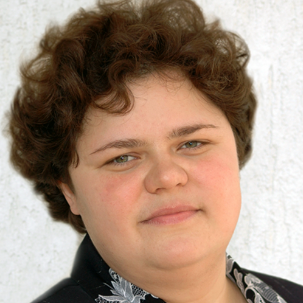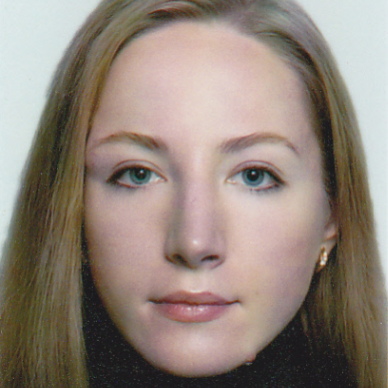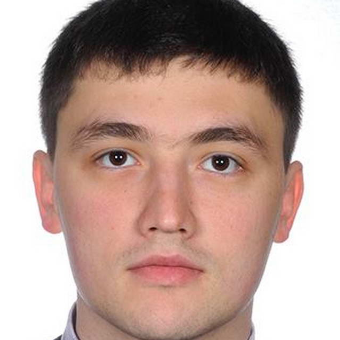International Journal of Intelligent Systems and Applications (IJISA)
IJISA Vol. 8, No. 8, 8 Aug. 2016
Cover page and Table of Contents: PDF (size: 545KB)
Hybrid Clustering-Classification Neural Network in the Medical Diagnostics of the Reactive Arthritis
Full Text (PDF, 545KB), PP.1-9
Views: 0 Downloads: 0
Author(s)
Index Terms
Hybrid clustering-classification neural network, supervised/unsupervised learning, overlapping classes, diagnostics, reactive arthritis
Abstract
In the paper, the hybrid clustering-classification neural network is proposed. This network allows to increase a quality of information processing under the condition of overlapping classes due to the rational choice of learning rate parameter and introducing special procedure of fuzzy reasoning in the clustering-classification process, which occurs both with external learning signal (“supervised”), and without one (“unsupervised”). As similarity measure neighborhood function or membership one, cosine structures are used, which allow to provide a high flexibility due to self-learning-learning process and to provide some new useful properties. Many realized experiments have confirmed the efficiency of proposed hybrid clustering-classification neural network; also, this network was used for solving diagnostics task of reactive arthritis.
Cite This Paper
Yevgeniy Bodyanskiy, Olena Vynokurova, Volodymyr Savvo, Tatiana Tverdokhlib, Pavlo Mulesa, "Hybrid Clustering-Classification Neural Network in the Medical Diagnostics of the Reactive Arthritis", International Journal of Intelligent Systems and Applications (IJISA), Vol.8, No.8, pp.1-9, 2016. DOI:10.5815/ijisa.2016.08.01
Reference
[1]T. Kohonen, Self-Organizing Maps. Berlin: Springer-Verlag, 1995. DOI: 10.1007/978-3-642-56927-2
[2]S. Haykin, Neural Networks: A Comprehensive Foundation. Upper Saddle River, N.Y.: Prentice Hall, 1999.
[3]J.C. Bezdek, Pattern Recognition with Fuzzy Objective Function Algorithms. New York: Plenum Press, 1981. DOI: 10.1007/978-1-4757-0450-1
[4]F. Hoeppner, T. Klawon, and R. Kruse, Fuzzy Clusteranalyse: Verfahren fuer die Belderkennung, Klassification und Datenanalyse. – Braunschweig: Vieweg, Reihe Computational Intelligence, 1996. DOI: 10.1007/978-3-322-86836-7
[5]J.C. Bezdek, J. Keller, R. Krisnapuram, and N. Pal, Fuzzy Models and Algorithms for Pattern Recognition and Image Processing. Springer, 1999. DOI: 10.1007/b106267
[6]F. Hoeppner, F. Klawonn, R. Kruse, and T. Runkler, Fuzzy Cluster Analysis: Methods for Classification, Data Analysis and Image Recognition. Chichester: John Wiley & Sons, 1999.
[7]M. Sato-Ilic, and L. Jain, Innovations in Fuzzy Clustering: Theory and Applications. Berlin: Springer, 2006. DOI: 10.1007/3-540-34357-1
[8]P. Vuorimaa, “Use of the fuzzy self-organizing map in pattern recognition”, in Proc. 3-rd IEEE Int. Conf. Fuzzy Systems “FUZZ-IEEE’94”, Orlando, USA, 1994, pp. 798-801. DOI: 10.1109/FUZZY.1994.343837
[9]P. Vuorimaa, Fuzzy self-organizing map. Fuzzy Sets and Systems, 1994, 66, pp. 223-231. DOI: 10.1016/0165-0114(94)90312-3
[10]E.C.-K. Tsao, J.C. Bezdek, and N.R. Pal, “Fuzzy Kohonen clustering networks,” Pattern recognition, 1994, 27, pp. 757-764. DOI: 10.1016/0031-3203(94)90052-3
[11]R.D. Pascual-Marqui, A.D. Pascual-Montano, K. Kochi, and J.M. Caraso “Smoothly distributed fuzzy C-means: a new self-organizing map,” Pattern Recognition, 2001, 34, pp. 2395-2402. DOI: 10.1016/S0031-3203(00)00167-9
[12]J.J. Sepkovski, “Quantified coefficients of association and measurement of similarity,” J. Int. Assoc. Math., 1974, 6 (2), pp. 135-152. DOI: 10.1007/BF02080152
[13]M.T. Wasan, Stochastic Approximation. Cambridge: The University Press, 2004. DOI: 10.1002/zamm.19700500635
[14]A. Dvoretzky, “Stochastic approximation revisited,” Advances in Applied Mathematics, 1986, 7(2), pp. 220-227. DOI: 10.1016/0196-8858(86)90033-3
[15]G.C. Goodwin, P.J. Ramadge, and P.E. Caines, “A globally convergent adaptive predictor,” Automatica, 1981, 17(1), pp. 135-140. DOI: 10.1016/0005-1098(81)90089-3
[16]S. Grossberg, “Classical and instrumental learning by neural networks,” in: Progress in Theoretical Biology, N.Y.: Academic Press, 1974, 3, pp. 51-141. DOI: 10.1007/978-94-009-7758-7_3
[17]J.C. Baras, and A. La Vigna, “Convergence of the vectors in Kohonen’s learning vector quantization,” in Proc. International Neural Network Conference, San Diego, CA, 1990, pp. 1028-1031. DOI: 10.1007/978-94-009-0643-3_176
[18]Ye. Bodyanskiy, P. Mulesa, O. Slipchenko, and O. Vynokurova, “Self-organizing map and its learning in the fuzzy clustering-classification tasks,” Bulletin of Lviv Polytechnic National University. Computer Science and Information Techology, Lviv: Publishing of Lviv polytechnic, 2014, 800, pp. 83-92.
[19]Т.V. Marushko, “Reactive arthropathy in children,” Health of Ukraine, 2012, 2, pp. 43-44. (In Ukrainian).
[20]V.M. Savvo, and Yu.V. Sorokolat, “Reactive arthritis in children, which connected with nasopharyngeal infection,” International Medical Journal, 2003, 9(2), pp. 128-131. (in Russian).
[21]T. Hannu, “Reactive arthritis,” Best Practice & Research Clinical Rheumatology, 2011, 25, pp.347-357. DOI: 10.1016/j.berh.2011.01.018
[22]C. Selmi, and M.E. Gershwin, “Diagnosis and classification of reactive arthritis,” Autoimmunity Reviews, 2014, 13, pp.546-549. DOI: 10.1016/j.autrev.2014.01.005
[23]M. Rihl, A. Klos, L.Kohler, and J.G. Kuipers, “Reactive arthritis,” Best Practice & Research Clinical Rheumatology, 2006, 20(6), pp.1119-1137. DOI: 10.1016/j.berh.2006.08.008
[24]P.S. Kim, T.L. Klausmeier, and D.P. Orr, “Reactive arthritis,” Journal of Adolescent Health, 2009, 44, pp. 309-315. DOI: 10.1016/j.jadohealth.2008.12.007




